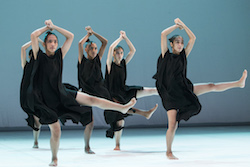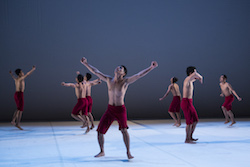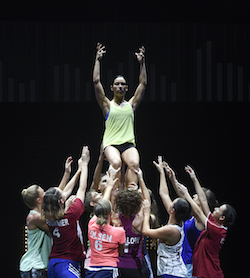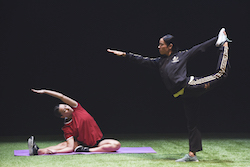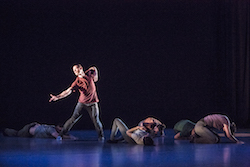
AUSTRALIAN CHAMBER ORCHESTRA : MURDER AND REDEMPTION @ CITY RECITAL HALL
This was not your standard Australian Chamber Orchestra (ACO) concert, but as always it featured absolutely superb playing by the ACO who were in inspired form and dynamically led by the charismatic, bouncing, at times close to dancing guest violinist Pekka Kuusisto, who has taken the place of Richard Tognetti, who is currently in residence at the Barbican in London. (The ACO will play at the Barbican next month).
The concert was divided into two halves,as befits the concert’s title. There was a fascinating blend and contrast of blues grass folk songs sung and played on guitar and banjo by guest artist Sam Amidon, with a turbulent, passionate Janacek piece (his first string quartet, The Kreutzer Sonata, as well as a dazzling version of a John Adams work entitled, Shaker Loops (1947) .
In the first half, Murder, the turbulent , at times quite spiky Janacek piece was magnificently played by the ACO. The wprk was inspired by the Tolstoy novella of the same name. At one time there was a stormy argument between sections of the orchestra tensely, breathlessly played, and this was contrasted with more melancholic and reflective sections .
Amidon’s folk songs, played in both halves, appeared at first to be simple tunes but then proved to be more complex. In the first half, in the work Way Go Lily, there were rippling flowing rhythms. How Come That Blood featured a fluid, clip clop almost galloping rhythm – Amidon on banjo , the orchestra accompanying him, and there was an interesting use of pizzicato.
For the first half the songs were arranged by Nico Muhly. Amidon’s rough hewn, sincere vocal style gave his retelling of these folk songs a powerful punch. Amidon’s raw playing contrasted with the more refined tomes of the Australian Chamber Orchestra.
The Redemption set opening the second half was a selection of songs performed by Amidon and Kuusisto alone, in a delightfully intimate yet casual and relaxed manner. This contrasted with, and allowed some relief, from the darker subject matter of the program’s first half.
Kuusisto treated his violin more like a folk fiddler, and occasionally joined his voice to Amidon’s in a delightful performance that also included a showy violin solo.
This half also featured an acapella like, haunting and powerful version of Brackett’s Simple Gifts, (the most famous hymn of the Shaker sect) as sung by Amidon.
John Adams work Shaker Loops was rich and multi layered and featured an aching ‘centre’. At times, the piece evoked the ‘music of the spheres’, shimmering and delicate, at other the playing was strident, with bubbling violins and cellos rumbling underneath.
This was a dazzling concert with a running time of two hours and ten minutes.
The Australian Chamber Orchestra’s toured the concert MURDER AND REDEMPTION nationally between the 2nd and 14th February.
The Australian Chamber Orchestra in Murder and Redemption was on national tour February 2 -14
https://www.aco.com.au








